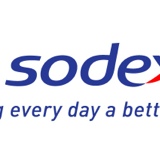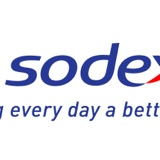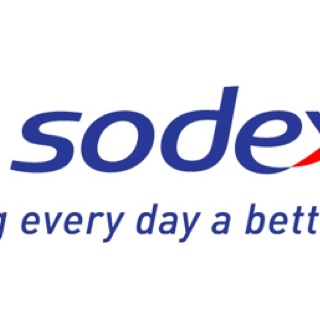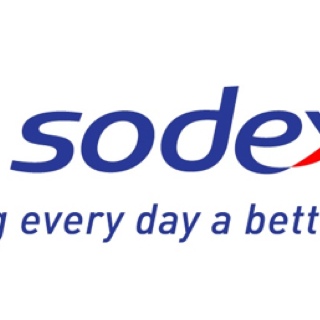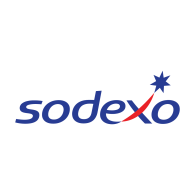Information
-
Document No.
-
Audit Title
-
Client / Site
-
Conducted on
-
Prepared by
-
Location
-
Personnel
Previous Recommendations
-
Was recommendation 1, from last safety review, implemented?
-
Was recommendation 2, from last safety review, implemented?
-
Was recommendation 3, from last safety review, implemented?
Injury And Illness Prevention Program
-
Is the written Injury and Illness Prevention Program in the safety Policy manual?<br>
-
Do you have a person who is responsible and has authority for overall activities of the Injury and Illness Prevention Program?
-
Do you have a system for identifying and evaluating your workplace hazards?
-
Do you maintain an ongoing safety training program?
-
Do you have a system in place that ensures employees will be recognized for safe and healthful work practices?
-
Will employees be disciplined for unsafe safety or health acts?
-
No late reporting of injuries?
-
Is there a labor-management safety committee? (10 or more employees)
-
Is the unit achieving EIF Target?
-
Is the unit achieving SIF Target?
Employer Posting
-
Is the OSHA poster Safety and Health Protection on the Job displayed in a prominent location where all employees are likely to see it?
-
Weekly safety message displayed?
-
Do employees know the weekly safety message?<br>
-
Emergency telephone numbers posted where they can be found in a emergency?
-
Where employees may be exposed to toxic substances, Material Safety Data Sheets been posted or made readily available?
-
Safety Board established and maintained?
Housekeeping and Sanitation
-
Ventilation and illumination adequate in all areas.
-
Aisles and passageways clear and unobstructed.
-
Adequate water provided.
-
Sanitary facilities furnished/maintained.
-
Storage and equipment rooms clean and orderly.
-
All waste materials deposited in proper containers.
-
Compressed gas cylinders secured properly in vertical position?
Material Handling
-
Mechanical lifts used where practical.
-
Material staged to minimize lifting and carrying.
-
Rigging equipment in good condition.
-
Employees do not bend over to lift heavy items?
-
Employees do not twist when lifting and lowering materials. (Turn their whole body instead)
-
Carts not overloaded?
-
Is there safe clearance for equipment through aisles and doorways?
-
Are aisle ways designated, permanently marked, and kept clear to allow unhindered passage?
-
Do employees know ways to prevent lifting injuries?
Slip/Trip/Fall Prevention
-
General trades - 6 foot fall rule applies.
-
Employees tied to adequate anchorage points.
-
Active use or posting of wet floor hazard barricades when mopping or stripping?
-
Harness/lanyards in good condition.
-
Standard guardrails in compliance.
-
Skylights properly guarded.
-
Openings to lower level properly guarded.
-
Floor opening covered, secured and marked.
-
Ice Melt / Salt available in winter?
-
Inspect ladder before use?
-
Are all ladders maintained in good condition, joints between steps & side rails tight, hardware & fittings securely attached & movable parts operating freely without binding or undue play?
-
Are non-slip safety feet provided on each ladder?
-
Are ladder rungs and steps free of grease and oil?
-
Is it prohibited to place a ladder in front of doors opening toward the ladder except when the door is blocked open, locked or guarded?
-
Is it prohibited to place ladders on boxes, barrels, or other unstable bases to obtain additional height?
-
Step ladders used only in the open position.
-
Do employees know ways to prevent slip, trip, fall injuries?
Personal Protective Equipment and Clothing
-
Eye protection worn 100% of the time.
-
Head protection worn 100% of the time.
-
Hearing protection worn in designated areas.
-
Face shield and safety glasses worn when grinding.
-
Respirators worn with prior approval.
-
Suitable filter lenses worn when welding or cutting.
-
Eye protection worn under welding hood.
-
Proper foot wear worn when required.
-
Do employees know how often to inspect PPE?
Electrical
-
Temporary wiring systems installed/protected.
-
Covers installed on "hot" panels.
-
Electrical danger signs posted.
-
Proper lockout/tagout procedures used.
-
GFCI protection used.
-
Extension cords in good condition.
-
Extension cords routed to eliminate trip hazards.
-
Temporary lighting bulbs protected.
-
Temporary outlets not overloaded.
Trench and Excavation
-
One call made for location of existing utilities.
-
Utilities have been identified.
-
Competent person performs daily inspections
-
Proper slope/bench/shoring if 5 feet or deeper.
-
Proper access/egress provided if 4 feet or deeper.
-
Access/egress points within 25 feet of employees.
-
Adequate barricades in place.
-
Stop logs/warning system in place for vehicles.
-
Spoil pile back at least 2 feet from excavation edge.
Scaffolding
-
Competent person on site when in use.
-
Scaffold inspected and tagged by competent person.
-
Guardrails and toe boards on scaffolds over ten feet high.
-
Ladder provided for access to scaffold platform.
-
Platform is fully decked and is of scaffold grade.
-
Scaffold free of visible damage.
-
All pins and braces in place and locked.
-
Wheels locked on rolling scaffold when in use.
-
Scaffold erected on firm and substantial surface.
Motor vehicle and Earth moving equipment
-
Alarm or spotter used if obstructed view to the rear.
-
Side by side dumping prohibited.
-
Seatbelts being worn.
-
Bi-directional machines have operative horn.
-
Maintains clear distance from dumping trucks.
-
Company vehicles travel at safe speeds
Crane and Rigging Safety
-
At least 10 foot clearance (electrical lines 50 kV or less).
-
Outriggers properly placed and used for all lifts.
-
Matting placed under each outrigger float.
-
Documented inspections (annual, monthly, daily).
-
Load capacity chart posted in cab of crane.
-
Proper barricade around swing radius of crane.
-
Slings, hooks, and chokers are in good condition.
-
Signal person used when crane is moving.
-
Employees are not under suspended loads.
Aerial Lifts
-
Employees standing firmly on platform.
-
Harness and lanyard worn on articulating lifts.
-
Lanyard attached to anchor point inside of lift.
-
At least 10 foot clearance (electrical lines 50 kV or less).
Tools - hand and power
-
Proper use of tool.
-
No visible damage to tool.
-
Cord not damaged and ground pin in place.
-
GFCI protection used.
-
Proper shields and guards in place.
-
Certification for powder actuated tool operation.
-
Safety clips or pins in place on air hose connections.
-
Proper PPE is being used.
-
Do employees know what to do when they have a broken tool?<br>
Chemical Safety
-
Are employees trained in the safe handling practices of hazardous chemicals?
-
Are eyewash fountains and safety showers provided in areas where corrosive chemicals are handled?
-
Flammable liquids stored in approved containers.
-
Are all containers, such as vats, storage tanks, etc., labeled as to their contents, e.g., "CAUSTICS"?
-
Are all employees required to use personal protective clothing and equipment when handling chemicals? (gloves, eye protection, respirators, etc.)
-
Oxygen cylinders stored 20 feet from fuel gas cylinders.
-
Cylinders labeled either empty of full.
-
LP cylinders are not stored in buildings.
-
Are flammable or toxic chemicals kept in closed containers, and below eye level when not in use?
-
Have standard operating procedures been established and are they being followed when cleaning up chemical spills?
-
Do employees know the location of the MSDS sheets?
-
Do employees know what to do when they find a chemical bottle that is not labeled?<br>
Emergency Action Plan
-
Do you have an emergency action plan?
-
Have emergency escape procedures and routes been developed and communicated to all employers?
-
Complete first aid kit accessible?
-
Do the employees know their responsibilities: For reporting emergencies? During an emergency? For conducting rescue and medical duties?
Exiting
-
Are there sufficient exits to permit prompt escape in case of emergency?
-
Do the exit doors open from the direction of exit travel without the use of a key or any special knowledge or effort when the building is occupied?
-
Where panic hardware is installed on exit door, will it allow the door to open by applying a force of 15 pounds or less in the direction of the exit traffic?
Fire Protection
-
Fire extinguishers of proper size and type for each location properly charged. Within 100 feet of work.
-
Does not block or obstruct fire exits, extinguishers or electrical panels?
-
No smoking rule enforced in restricted areas.
-
Monthly visual inspections of portable fire extinguishers.
-
Heaters are a safe distance from combustibles.
-
Hot work permit issued when required.
Work Zones
-
Signs in good condition/non-conflicting/clear view/proper position.
-
Message sign - appropriate message/proper position.
-
Flaggers certified/visible/properly positioned/ flagging correctly/advanced warning signs.
-
Misc. - adequate buffer/material and equipment properly stored/work area protected/evidence of accidents.
Environmental
-
SWPPP measures intact.
-
Storm water properly disposed.
-
Spill kit available.
-
With above ground storage tanks, is fire extinguisher present.
-
Tanks are more than 20 feet from building.
-
Spill kits and extinguisher located on trucks with auxiliary fuel tanks.
Masonry
-
Protruding rebar guarded or protected.
-
PPE provided for employees.
-
Wash stations near working area.
-
Compressed air concrete pumping hoses equipped with joint connectors.
-
Non-conductive bull float handles used where electrical exposure might occur.
-
Shoring erected per drawings and inspected before/during/after concrete placement.
-
Formwork not removed until concrete has gained sufficient strength.
-
Precast concrete sections adequately supported until permanent connections are made.
-
Embedded lifting inserts capable of supporting 2 times maximum load.
-
Lifting hardware capable of supporting 5 times maximum intended load.
-
Restricted employee access under precast concrete members.
-
Limited access zone established for masonry wall construction
-
Masonry walls over 8 foot adequately braced.
Safety Education
-
Superintendent or other Unit Manager successfully completed 30-Hour OSHA construction Training Course. Must substantiate by presenting U.S. Department of Labor OSHA Completion Card or Certificate.
Employee Recommendations
-
Do employees have concerns or recommendations?
Recommendations
-
Recommendation 1
-
Recommendation 2
-
Recommendation 3
